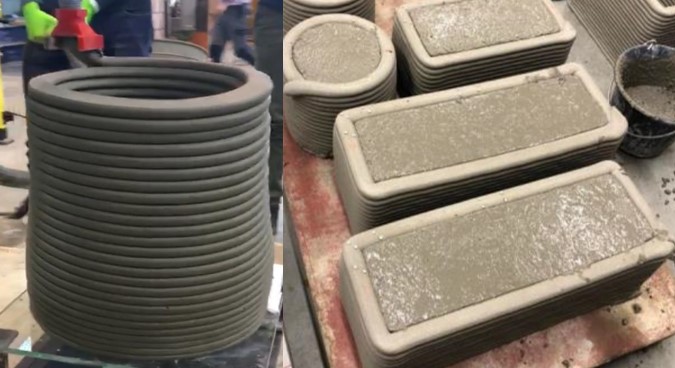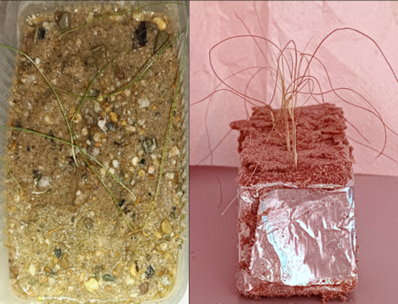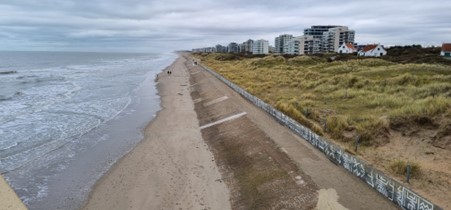As part of the DuneFront project, researchers are exploring how innovative materials can enhance coastal protection while supporting marine life. One key focus is bioreceptive concrete—a special type of cement-based material designed to encourage plant and microorganism growth. By developing more eco-friendly construction materials, DuneFront is working towards coastal infrastructure that not only protects shorelines but also enhances biodiversity. This work exemplifies how interdisciplinary research can address global challenges while creating opportunities for ecological restoration and community engagement.
How DuneFront is contributing:
1. Developing bioreceptive concrete:
Scientists are testing different cement mixtures, such as bone ash, foamed concrete, and limestone-rich cement, to find the best balance between durability and ecological benefits. These materials aim to support vegetation while maintaining the strength needed for coastal defences.
2. 3D-printed designs for biodiversity
Advanced 3D printing technology allows researchers to create structures with specific textures, shapes, and porosity levels that promote biodiversity and bioreceptivity. This technique is also being used to design eco-friendly dikes that blend with the natural environment.

Picture 1: Printing of cylinders (left) [1], and 3D printed elements with infill of self-compacting concrete (right) [2], in Magnel-Vandepitte Lab.
3. Life cycle assessment:
To ensure sustainability, all materials undergo life cycle assessments to measure their long-term environmental footprint. The goal is to minimize negative impacts while maximizing the benefits for marine ecosystems.
Encouraging early results
Initial laboratory tests have shown promising signs regarding the bioreceptivity of the mixtures. Trials with marram grass (Ammophila arenaria), a common dune plant, have demonstrated successful germination in several concrete mixtures. These findings suggest that bioreceptive materials could help stabilise coastal dunes while enhancing local ecosystems.
Picture 2: Example of bioreceptive concrete samples with germinated Ammophila Arenaria.
What’s next?
The next step is real-world testing. Researchers will apply their lab findings in pilot projects, starting in De Panne, to assess how bioreceptive concrete performs in natural coastal conditions. Further improvements will also be made to increase durability while maintaining or even improving ecological benefits.
Stay tuned as DuneFront continues to shape the future of sustainable coastal protection!

Picture 3: Location in De Panne where the pilot project will be realised.
References :
[1] M. K Mohan, “Towards sustainable concrete 3D printing for marine structural applications,” dissertation, Ghent University, 2023. Accessed: Feb. 10, 2025. [Online]. Available: http://hdl.handle.net/1854/LU-01GTE5YZBYMDQ21DM3E6JCGFH8
[2] M. Bekaert, “Mechanical behavior and durable aspects of 3D printed concrete formwork,” dissertation, Ghent University, 2024. Accessed: Feb. 10, 2025. [Online]. Available: http://hdl.handle.net/1854/LU-01J0NQES17CTET4Z3G6A4J5PQ6